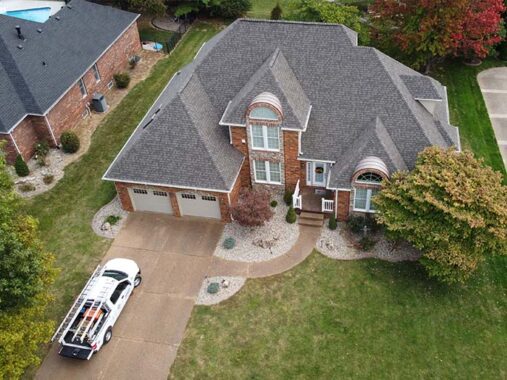Roof ventilation isn’t typically something you think about very often. However, it does play a very important part in a variety of everyday aspects. Making sure you have the right amount of ventilation in the attic can have a positive influence on the lifespan of your roof system. It can also have a positive effect on the comfort and well-being of your family, your potential costs for home repairs, and the cost of your heating and cooling bill.
Without appropriate roof ventilation, the attic is provided the opportunity to stay at a high temperature. As a result, your shingles can become cracked and damaged long before they should be showing signs of damage.
What Is Roof Ventilation and Why Is It Needed?
The correct kind of ventilation helps address excess heat and moisture that can potentially wreak havoc on your home. Roof ventilation helps correct air conditioning of an area such as an attic, an unheated space in the basement, or an upper floor attached to the roof. Heat and moisture buildup can cause predictable but different issues in hot and cold climates.
During the summer, the ventilation in your roof assists in cooling the roof and underlying water barrier materials. As a result, this reduces the expansion of the metal and slows the aging of asphalt shingles, which suffer from the hot summer temperatures. The sun beating down on your roof during the summer can cause the temperature in the attic to rise. This rise in temperature can cause the roof sheathing to warp and distort the shingles. If the floor in the attic is not insulated evenly and sufficiently, the heat can radiate down into the finished living spaces making it more problematic and expensive to keep the space comfortable.
During winter, it is important to keep your roof cool, as well. When temperatures drop below freezing, warm air escaping into the attic from the heated living area below rises to the underside of the roof deck. When the roof becomes warm, the bottom layer of accumulated snow on the rooftop begins to melt. This causes water to dribble down the roof, resulting in it refreezing into ice and causing an ice dam. As a result, water can become backed up under the shingles due to the water having nowhere to go, causing potential leaks and water damage. Even if there are no leaks, the extra weight can produce damage to the structure of the roof. Ventilation stops this by circulating the coldest air from the eaves through the vent in the roof peak. By keeping your roof cool, you can stop snow from melting on the roof.
Final Thoughts
It is vital to have proper ventilation for the well-being of your home and everyone in it. If you have concerns of whether your roof is lacking sufficient ventilation or you have noticed any of the issues mentioned, it is recommended you have a professional local roofing contractor inspect your roof. By calling Tesson Roofing & Exteriors, LLC at (314) 932-1042, we will let you know what your options are and address any concerns you may have.
